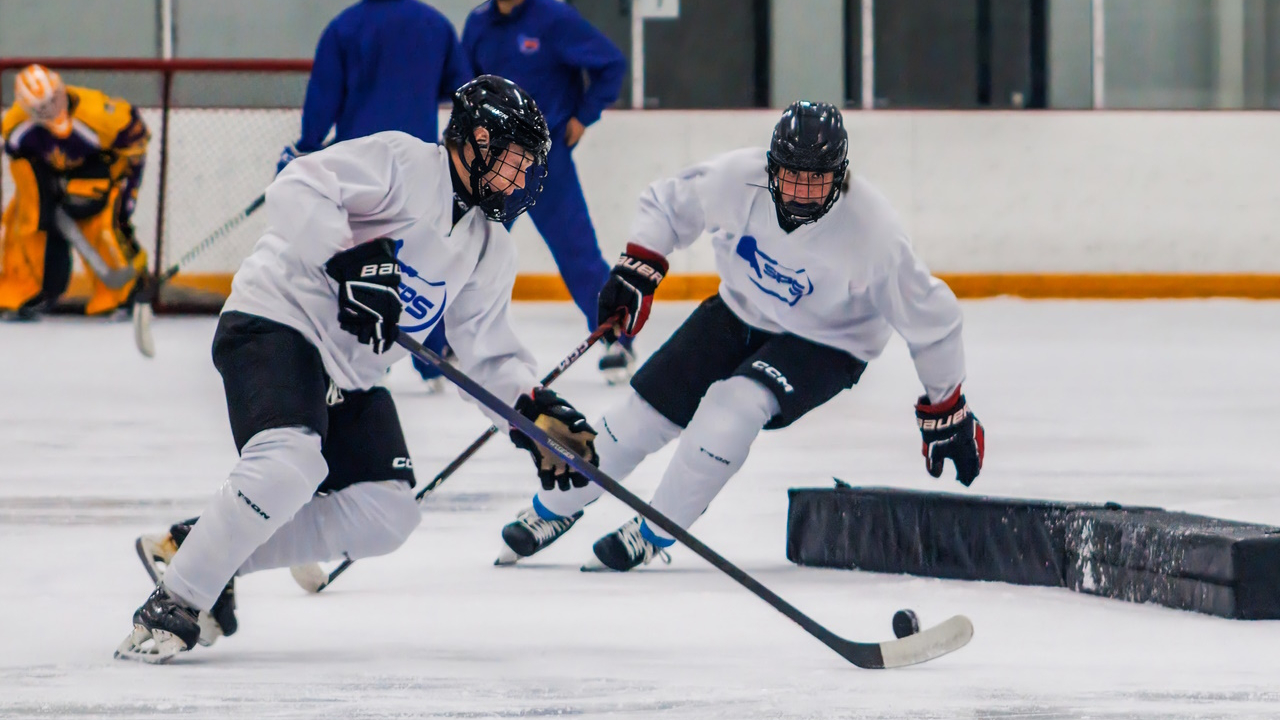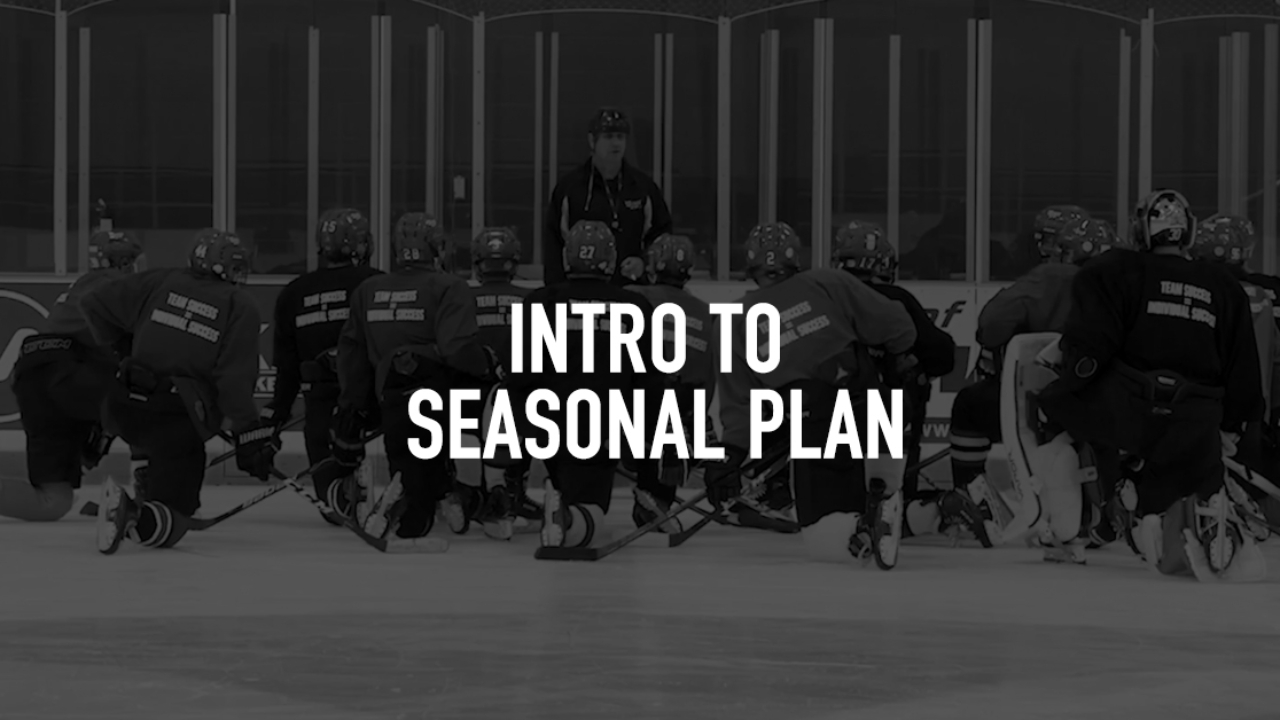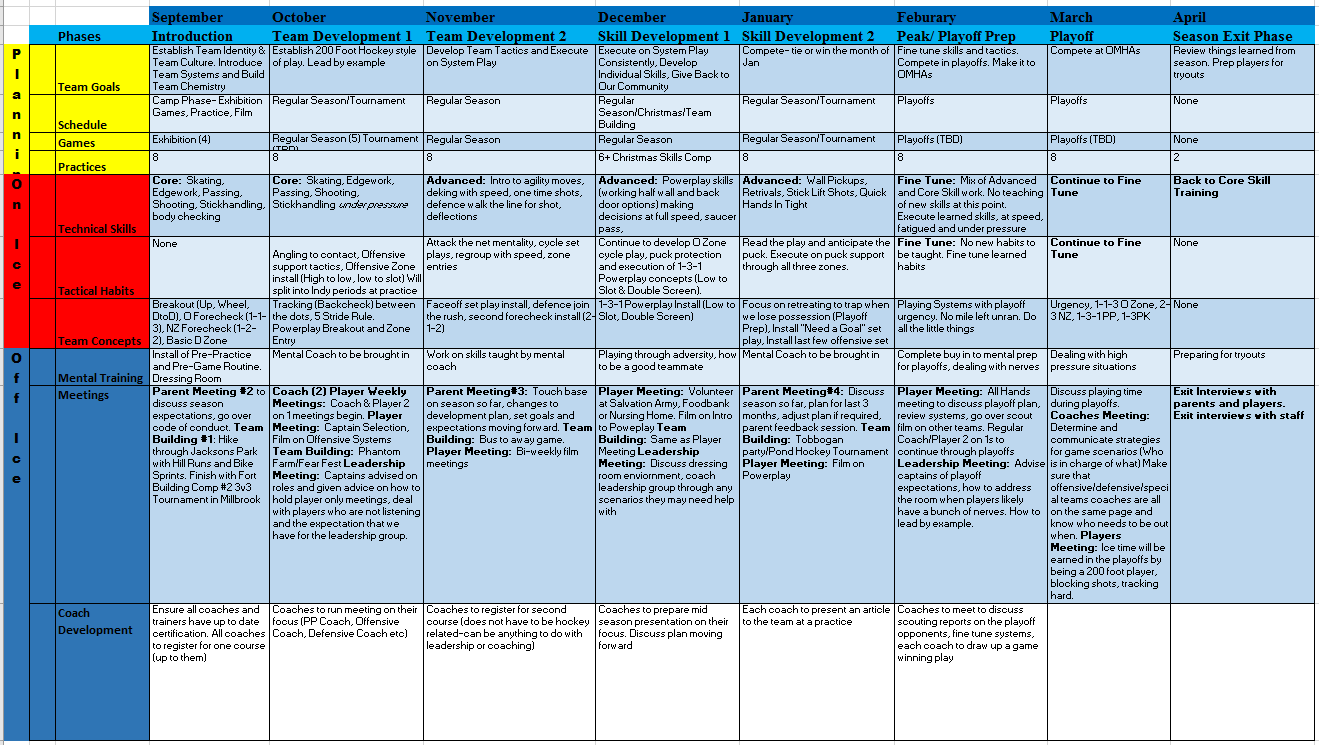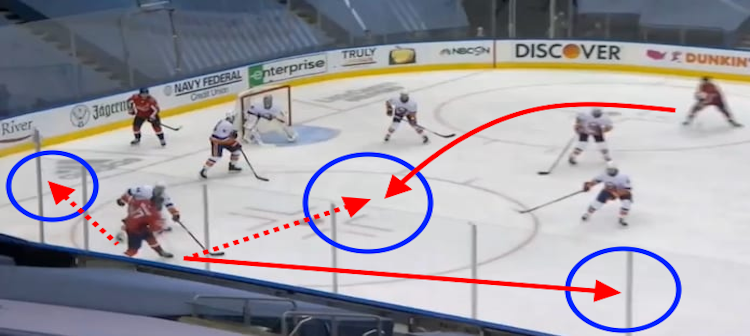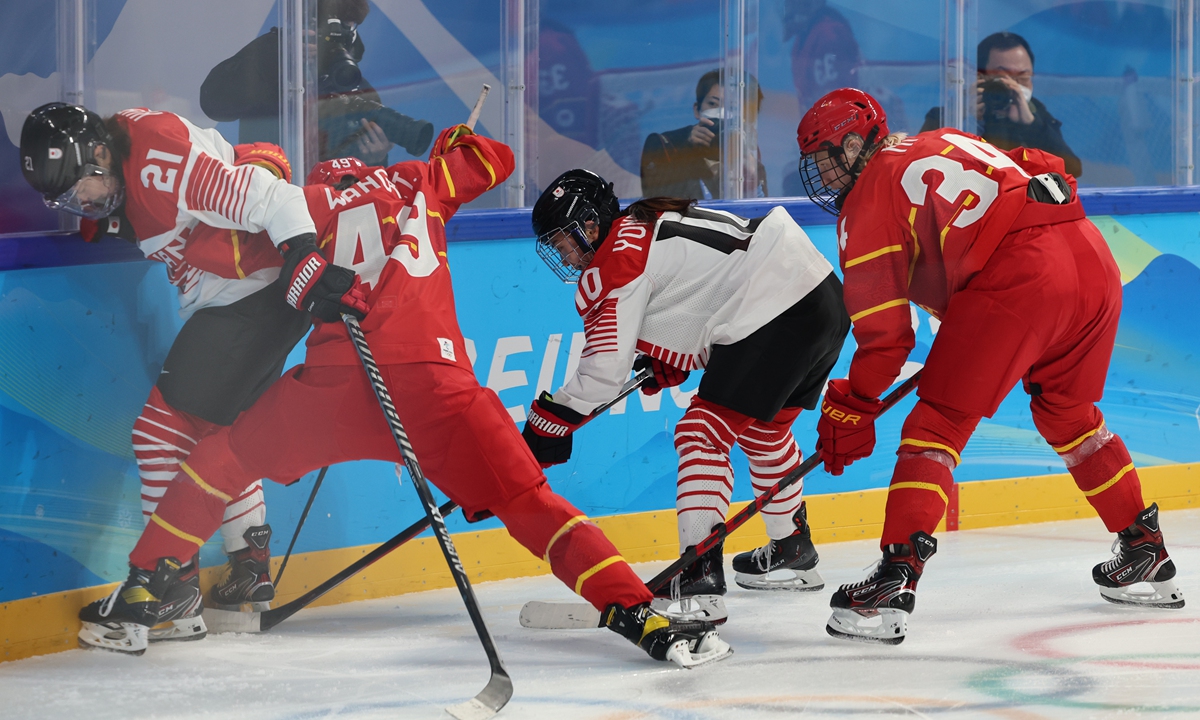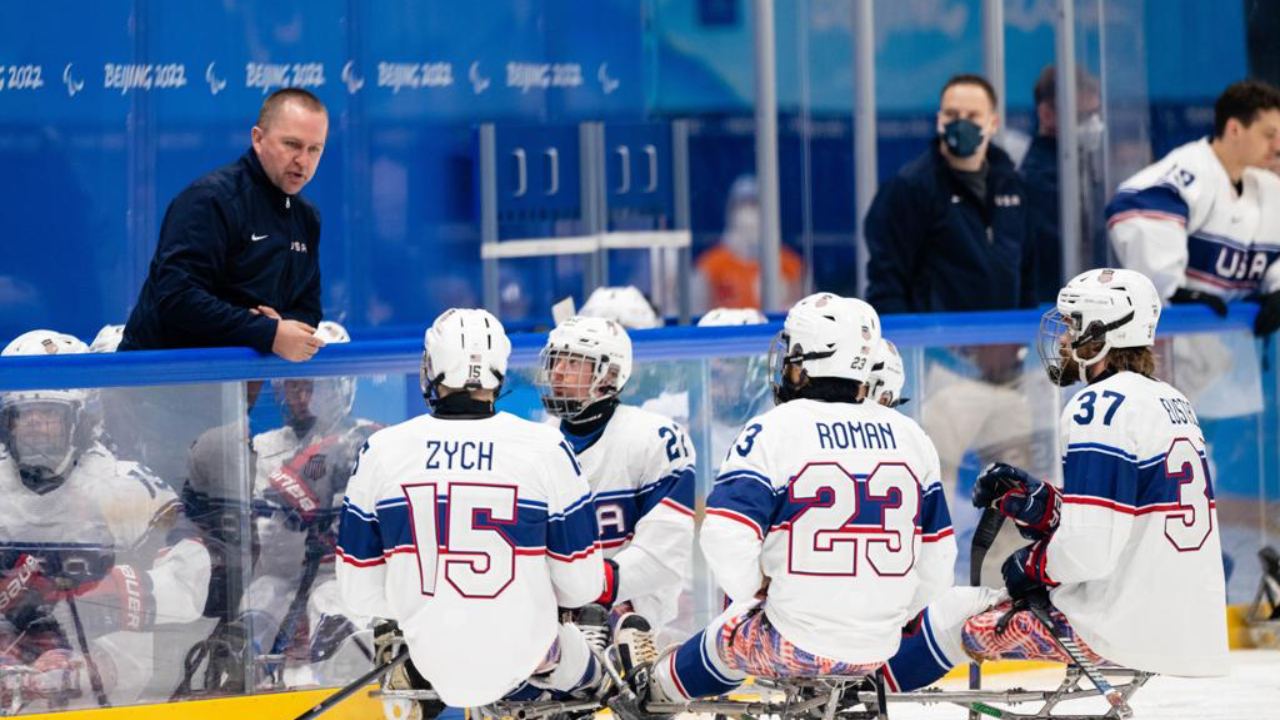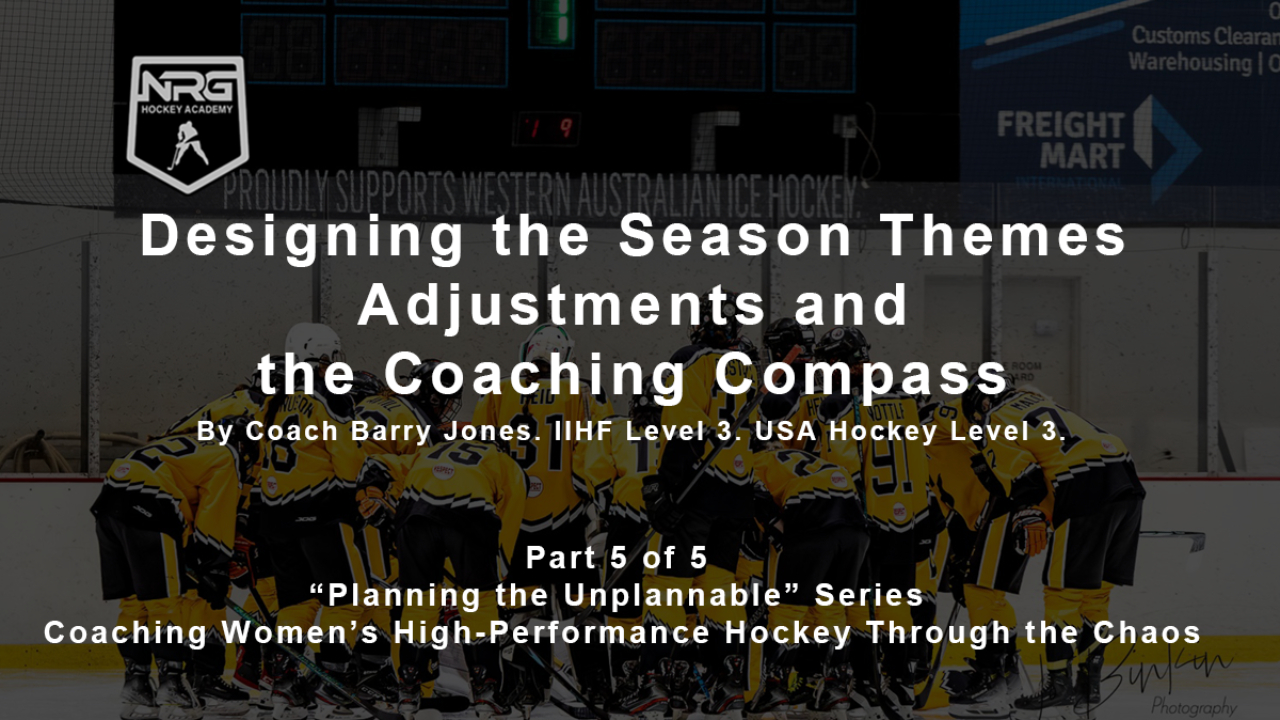
Part 5: Designing the Season - Themes, Adjustments, and the Coaching Compass
By Coach Barry Jones | IIHF Level 3 | USA Hockey Level 3
Part 5 of 5 - From the “Planning the Unplannable” Series: Coaching Women’s High-Performance Hockey Through the Chaos
The Myth of the Perfect Plan
Ask any coach for their season plan and you’ll probably get:
- A spreadsheet of weekly topics
- Drill libraries
- A “systems” overview
- And a PowerPoint with slides that haven’t aged well
But ask how they adapt when things don’t go to plan, and that’s where the cracks show.
Because in a nonlinear, ecological approach…
The plan is not a map; it’s a compass.
You don’t chart the whole journey.
You chart the direction and make ongoing course corrections as you go.
Building Themes, Not Topics
Instead of week-by-week “skills” (Week 3: Breakouts), we build problem-based themes that stretch across 2–3 weeks.
Each theme:
- Embeds multiple principles
- Hosts affordance-rich environments
- Encourages variability, creativity, and decision-making
Theme: Breaking Pressure
· Embedded Principles: Support the puck, Delay under pressure, Quick ups
· Sample SAG: 3v3 low breakout + chaser
Theme: Middle Lane Stretch
· Embedded Principles: Middle lane drive, Inside-out routes, Quick ups
· Sample SAG: NZ 3v2 w/ long pass trigger
Theme: Slot Protection
· Embedded Principles: Stick on puck, Protect the middle, Layered defence
· Sample SAG: 3v3 slot collapse w/ reward for intercepts
Adjusting Within the Theme
What if it’s not working?
What if your team outpaces the plan?
What if the emotional or cognitive load is off?
That’s where your Coaching Compass comes in.
The Coaching Compass: 4 Adjustment Zones
Zone: Overload
· Indicator: Players disengaged, fatigued, confused
· Adjustment: Simplify task, reduce variables, increase clarity
Zone: Underload
· Indicator: Players on autopilot, minimal challenge
· Adjustment: Increase speed, pressure, or variability
Zone: Emerging
· Indicator: New solutions starting to show
· Adjustment: Increase reps under pressure, constrain time/space
Zone: Stuck
· Indicator: Same errors, habits not shifting
· Adjustment: Shift game form, add novel constraint, change affordances
Special Note: Women’s High-Performance Context
In the women’s game, emotional context matters just as much as tactical structure.
That means:
- Recognizing off-ice stressors
- Adjusting for cognitive load (not just physical fatigue)
- Reading non-verbal cues and peer dynamics
The compass helps you guide without over-controlling.
It honors the athlete as a learner, not a robot in your system.
Coach’s Corner: The Plan I Use
For the WA Women’s State Team, I use this flow:
- Week 1–3: Theme – Breaking Pressure
- Week 4–6: Theme – Middle Lane Stretch
- Week 7–9: Theme – Attacking in Layers
- Week 10–12: Theme – Protect the Middle
- Week 13–15: Theme – Play Fast Under Pressure
- Week 16–18: Theme – Special Situations and Identity
- Week 19–20: Reinforcement Blocks (based on performance gaps)
I didn’t follow it exactly.
But it gave me a directional framework that kept us aligned across reps, games, and feedback.
Language That Sticks
- “This isn’t the plan, it’s our starting point.”
- “We adjust the environment, not the athlete.”
- “If they’re not learning, the rep is wrong, not the player.”
- “Our compass is set, but the terrain might change.”
Reflective Questions for Coaches
1. Does your plan give you flexibility or trap you in routine?
2. Can you tell when players are underloaded or overloaded?
3. Are your adjustments responsive or reactive?
Series Wrap-Up: Planning the Unplannable
To build a high-performance program that thrives in chaos, we need:
- A plan built around problems, not just drills
- Clear principles that act as game anchors
- Repetition without repetition to build stickier habits
- A culture that invites ownership and exploration
- And a compass that keeps us adaptive, not reactive
The game changes every shift.
Your plan should be ready for that.
“Planning the Unplannable” Series: Coaching Women’s High-Performance Hockey Through the Chaos
Part 1: The Periodisation Paradox - Why Planning Still Matters in a Nonlinear World
Part 2: Principles Over Plays - Building a Game Model Around What Transfers
Part 3: Reps That Stick - Habit Building Through Ecological Design
Part 4: Culture is the Constraint - Coaching the Human Before the Skill
Part 5: Designing the Season - Themes, Adjustments, and the Coaching Compass



